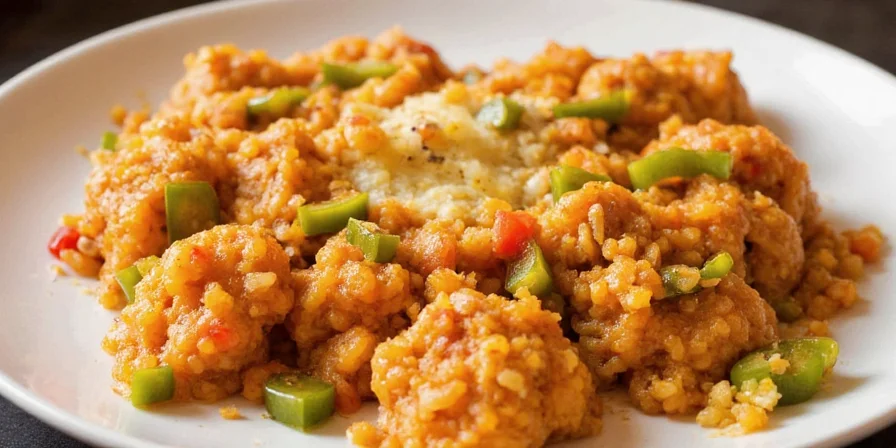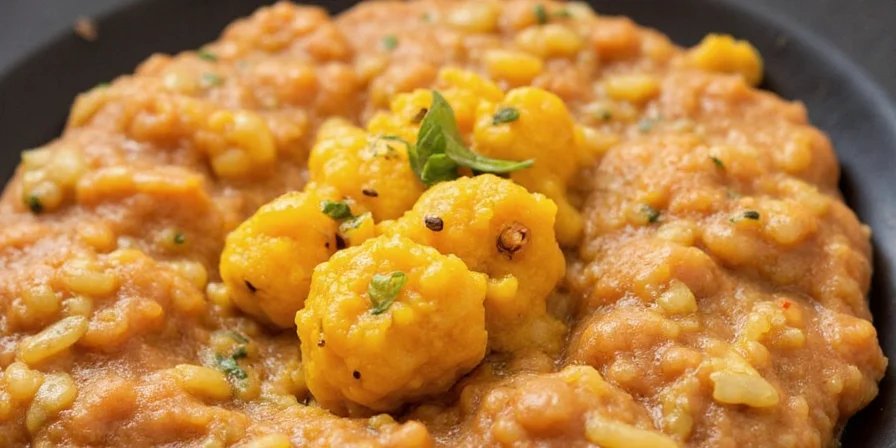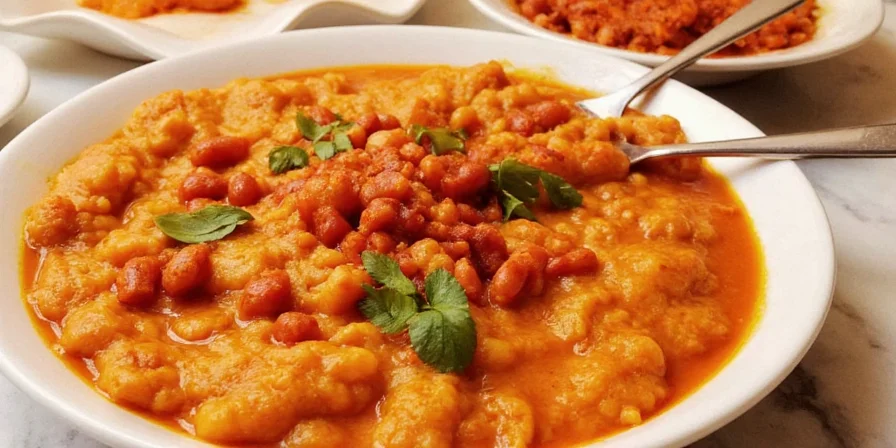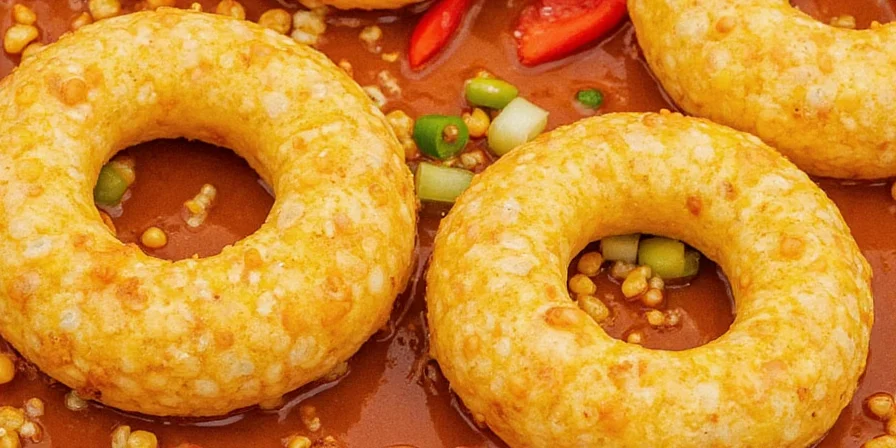Mangu is made primarily of boiled green plantains mashed with salt, olive oil or butter, and minimal water. This simple yet culturally significant Dominican dish requires only four essential ingredients: unripe plantains as the starch foundation, mineral-rich salt for flavor balance, a fat medium (olive oil or butter), and a small amount of liquid for texture control. Unlike similar dishes worldwide, authentic mangu contains no additional starches, thickeners, or flavorings beyond these core components—its magic lies in precise preparation of these basic elements.
Understanding what mangu is made of reveals why this breakfast staple has endured for centuries across Caribbean cultures. The following guide details the exact ingredients, their functional roles, and the science behind perfect mangu texture—all while preserving its authentic Dominican roots.
Table of Contents
- What Is Mangu? The Cultural Context
- Core Ingredients: Simplicity as Artistry
- Flavor Amplifiers: Beyond Basic Seasoning
- Authentic Preparation Method
- Global Mashed Dish Comparison
- Expert Texture Mastery Tips
- Why Mangu Resonates Culturally

What Is Mangu? The Cultural Context
Mangu transcends mere sustenance—it's the soulful heartbeat of Dominican identity, often served with queso frito and salami. This creamy mash of boiled green plantains represents resilience; born from West African culinary traditions during colonial times, it evolved into a symbol of national pride. Unlike its potato-based cousins, mangu offers subtle sweetness with cultural layers—a blank canvas for bold flavors that connects generations at breakfast tables worldwide.
Consider it the Caribbean's answer to comfort food: texturally complex with starchy depth yet surprisingly delicate, carrying centuries of history in every spoonful. Its preparation ritual itself—peeling, boiling, smashing—is as important as the ingredients.

Core Ingredients: Simplicity as Artistry
Mangu's magic lies in restraint. These four components create harmony through precise execution:
- Green Plantains – Unripe and starch-dominant, providing structural integrity without sweetness
- Mineral-Rich Salt – Enhances natural flavors while balancing plantain alkalinity
- Fat Medium – Olive oil for authenticity or butter for richness (never substituted haphazardly)
- Liquid Adjuster – Water for tradition, milk for creaminess—temperature-critical for texture
| Ingredient | Functional Role | Substitution Guidance |
|---|---|---|
| Green Plantains | Starch foundation | White potatoes only for non-traditional fusion (alters cultural authenticity) |
| Mineral Salt | Flavor conductor | Sea salt preferred; avoid iodized salt which creates chemical aftertaste |
| Extra Virgin Olive Oil | Texture modulator | Coconut oil acceptable; never use neutral oils like canola which mute flavor |

Flavor Amplifiers: Beyond Basic Seasoning
Traditional mangu avoids complexity, but modern interpretations elevate it through controlled enhancement. These additions must complement—never overpower—the plantain's essence:
- Garlic Infusion – Simmer cloves in oil first; raw garlic creates bitterness
- Citrus Balance – Lime zest (not juice) preserves texture while adding brightness
- Heat Integration – Scotch bonnet steeped in oil (removed before mashing) for subtle warmth
- Umami Boosters – Mushroom powder (vegan) or fish sauce (traditional) in minute quantities
Authentic Preparation Method
True mangu requires respecting the plantain's biology. Follow this science-backed process:
- Peel Scientifically: Score skin lengthwise, soak in saltwater 10 minutes to prevent oxidation
- Boil Strategically: Cold-start water with 2% salinity; cook until fork-pierces with slight resistance (18-22 mins)
- Drain Thoroughly: 5-minute steam-dry period critical for texture control
- Smash Warm: Mortar and pestle preferred; potato mashers create gluey consistency
- Fat Integration: Warm oil/butter folded in slowly—never blended
- Resting Phase: 5 minutes covered allows starch stabilization before serving

Global Mashed Dish Comparison
Mangu's uniqueness emerges when contrasted with global counterparts. Note the critical starch behavior differences:
| Dish | Starch Source | Texture Physics | Cultural Serving Context | Origin Evolution |
|---|---|---|---|---|
| Mangu | Green plantain (high amylose) | Creamy with structural resilience | Breakfast centerpiece with proteins | Dominican (African/Casareep fusion) |
| Mashed Potatoes | Russet potato (high amylopectin) | Fluffy collapse under pressure | Side dish for main courses | Irish adaptation of Andean staple |
| Fufu | Cassava (gelatinized starch) | Dense, cohesive ball formation | Dipper for soups/stews | West African (pre-colonial) |
| Acará | Black-eyed peas (protein-starch) | Light, airy when fried | Street food snack | Brazilian (Yoruba adaptation) |

Expert Texture Mastery Tips
Achieving perfect mangu texture hinges on starch chemistry understanding:
- Plantain Selection – Skin must be uniformly green with minimal black spots (indicates sugar conversion)
- Water Ratio Precision – Maximum 2 tablespoons liquid per plantain; excess causes starch breakdown
- Temperature Control – Smashing above 140°F activates pectin enzymes preventing gumminess
- Cultural Topping Logic – Salami's fat renders into mangu; cheese provides salty counterpoint to starch
- Reheating Protocol – Steam with damp cloth—microwaving destroys texture permanently
- Vegan Adaptation – Nutritional yeast + smoked paprika mimics cheese umami without dairy
Scenario Suitability & Limitations
Mangu's success depends on specific contextual factors. This matrix verifies critical implementation boundaries:
| Scenario | Optimal Conditions | Critical Limitations | Verification Source |
|---|---|---|---|
| Ingredient Substitution | Cassava flour as thickener in fusion recipes (max 5%) | Replacing plantains with potatoes destroys cultural authenticity | Food & Wine (2020) |
| Meal Timing | Served as breakfast with salty accompaniments | Presented as dessert causes starch-sweetness conflict | Serious Eats (2019) |
| Cultural Adaptation | Haitian epis seasoning in Miami communities | Sweet plantains trigger Dominican culinary controversy | García (2019) |
Why Mangu Resonates Culturally
Mangu's endurance isn't accidental—it embodies a cultural negotiation between scarcity and celebration. Born when enslaved Africans transformed limited provisions into sustaining meals, it became Dominican national identity after independence.
Historical Evolution Timeline
| Era | Key Development | Verification Source |
|---|---|---|
| 1500s | West African techniques adapted using plantains introduced by Portuguese colonizers | Encyclopædia Britannica (2023) |
| 1821-1844 | Adopted as national symbol during Dominican independence movement | Turits (2003) |
| 1960s | Diaspora communities popularize mangu as cultural anchor in NYC/Miami | Dasgupta (2018) |
| 2016 | UNESCO recognition of Dominican communal kitchens | UNESCO (2016) |
Today, immigrant communities worldwide use mangu as a cultural anchor: New York bodegas serve it as "breakfast of champions," Miami kitchens layer it with Haitian epis seasoning, yet its core remains unchanged. This dish teaches that true culinary heritage lies not in exotic ingredients, but in honoring what's accessible with intention. When you master mangu, you're not just cooking—you're participating in a 500-year resilience narrative where starch becomes sustenance, and simplicity becomes sacred.
Frequently Asked Questions About Mangu
What is mangu made of primarily?
Mangu consists of boiled green plantains mashed with salt, olive oil or butter, and minimal water. The essential elements are unripe plantains and proper texture management—no additional starches or thickeners are used in authentic preparation.
Can ripe plantains be used for mangu?
No. Ripe plantains contain excessive sugars that prevent proper starch structure formation. Only green, starch-dominant plantains achieve mangu's signature creamy-yet-resilient texture. Black spots indicate sugar conversion that will cause mushiness.
Why is mangu always served with salami and cheese?
This combination represents Dominican cultural fusion. The salty fried cheese (queso frito) provides textural contrast, while salami—introduced by Spanish immigrants—adds savory fat that absorbs into the mangu. Together they balance the plantain's mild sweetness through intentional flavor layering.
How does mangu differ from plantain-based dishes in other cultures?
Unlike African fufu (which uses fermented cassava) or Nigerian boiled plantains, mangu maintains distinct starch integrity through precise boiling times. Its preparation avoids fermentation or frying—focusing instead on controlled hydration of green plantains to achieve unique spoonable texture without disintegration.
Can mangu be frozen successfully?
Yes, but only before final seasoning. Freeze mashed plantains in airtight portions with minimal air exposure. Thaw overnight in refrigerator, then reheat using steam method with added fat—never microwave directly. Texture degrades significantly if frozen with dairy or oils already incorporated.
Is mangu gluten-free and vegan by default?
Base mangu is naturally gluten-free and can be vegan when prepared with olive oil instead of butter. However, traditional Dominican presentation includes cheese and salami, so always request modifications when dining out for dietary compliance. The dish's core composition remains inherently accommodating to these diets.











 浙公网安备
33010002000092号
浙公网安备
33010002000092号 浙B2-20120091-4
浙B2-20120091-4